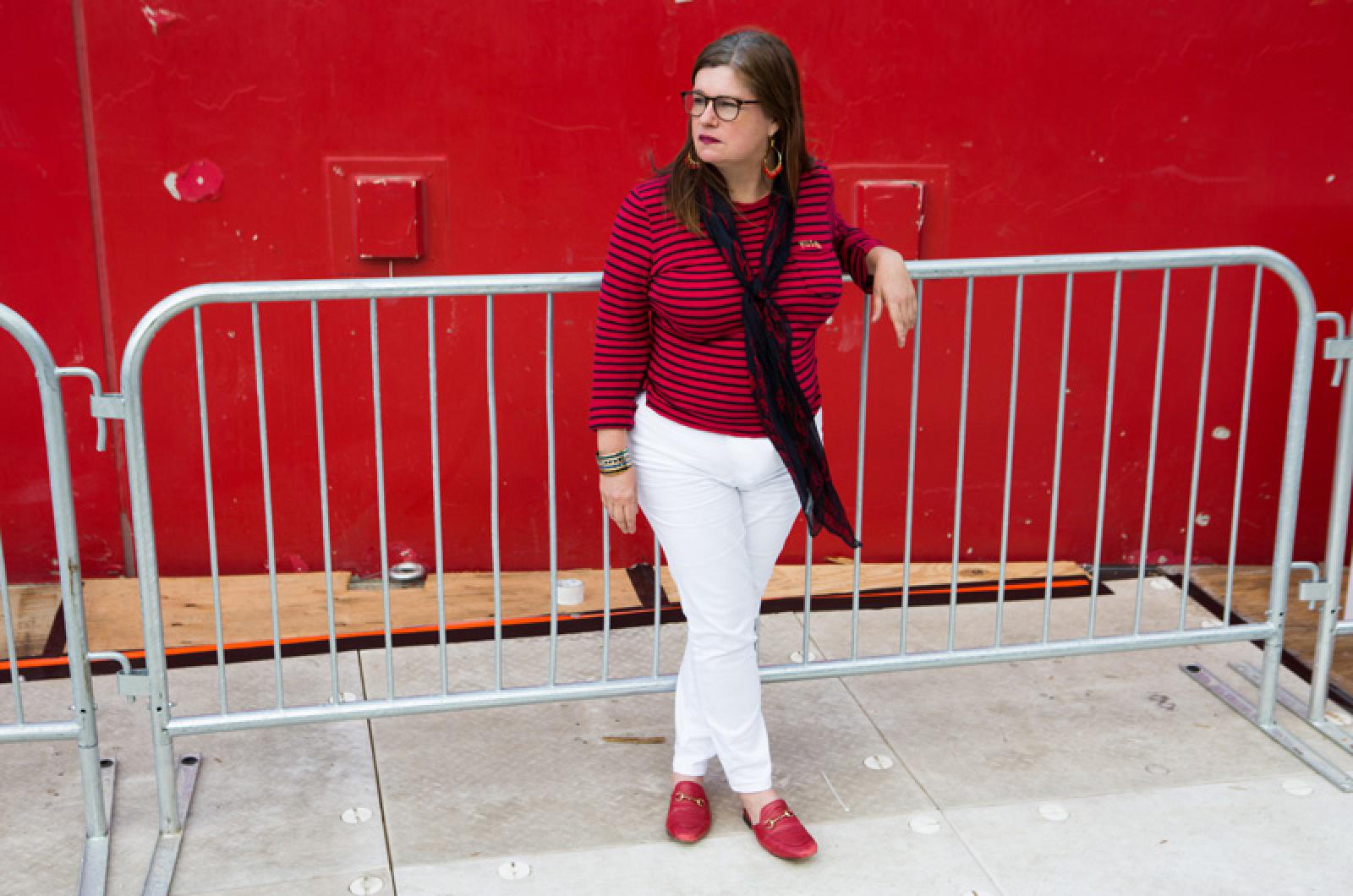In 2003, Holly Gleason attended the funeral of June Carter Cash. At the ceremony, Rosanne Cash gave a beautiful tribute to her stepmother. Ms. Gleason was moved to tears, but felt a pang of remorse thinking that only the people assembled would hear those words. She wanted the whole world to hear how Ms. Cash had lifted her mother up, praising her for lifting up everyone else: from Johnny Cash to all of the children and stepchildren, to strangers at every turn.
Fourteen years later, thanks to Ms. Gleason, that tribute is now available for everyone to read as part of her new book, Woman Walk the Line, How the Women in Country Music Changed Our Lives.
Woman Walk the Line contains 27 essays written by women about the female country singer who changed their lives. In a way, the book hooks into the heart like a great country song, one performed by a woman — full of heartbreak and hope, hangovers and transcendence, and never bitter even when acknowledging society’s stacked deck for the dudes.
There are tales of grief, of coming of age, of trying to escape a way of life too claustrophobic or broken to contain a wild and individual spirit. And it all started with one question, which Ms. Gleason posed to each writer: “Who is the country artist who pivoted and changed your life; when the music went from black and white to technicolor.”
Ms. Gleason is the perfect person to have edited this book into being. Her whole life has revolved around music, as a longtime music journalist for Rolling Stone, CREEM, No Depression, as a development artist for Kenny Chesney, as an academic, and as a songwriter penning the number one single, Better As a Memory, under her pseudonym, Lady Goodman.
She has deep friendships in the music industry and a Rolodex to match, one that enables her to get Taylor Swift to submit a piece she wrote at the age of 18 about Brenda Lee, or reach out to singer Grace Potter by saying, “Want to make your parents feel better about that expensive college education they paid for?”
Ms. Gleason also writes music features for the Gazette, and lived on the Vineyard for a time in the early 2000s. She now writes from her home base in Nashville, Tenn.
From idea to completion, the book took about 16 months to complete, she said. “The process was really high tech,” she joked. “I had two legal pads, one with a list of potential women writers, the other with a list of women artists.”
She started by reaching out to the writers, a mix of award-winning journalists, editors, musicians, professors and authors, and letting them choose their singers. She wanted a range, not just for the singers but with the representation of writers. “I wanted a variety of occupations, ages, sexual orientations, meaning also single, married, career-women, wives,” she said.
For the most part the writers chose different singers but there were some stumbling blocks when more than one person wanted to write about the same artist. Lucinda Williams was tops on Ms. Gleason’s own list, but when a young writer picked her, Holly stepped aside like a good editor does. Instead, Ms. Gleason wrote about Tanya Tucker, in a coming-of-age essay titled Punk Country and Sex Wide Open.
Ms. Gleason grew up in a Cleveland suburb, an up-and-coming golfer who on the outside looked and played the part of a good girl looking to marry well and settle into country club living. “With my Shetland wool Fair Isle sweater, straight-legged corduroys, button-down Oxford shirt, and sleek brown hair side-parted, I was an American ideal,” she writes in her essay.
But her home life was hard, “long on alcoholism, flagrant infidelity, mental institutions and pharmaceutical cures,” and so she found solace in the music, at first a steady diet of rock and roll. “Country music was for hicks and hayseed golf pros,” she writes.
But something about Tanya Tucker changed her perspective. First there was her unabashedly sexy look to promote her TNT album, released in 1978, “a hot-rod redhead in a skin-clutching red spandex catsuit,” and then there were the lyrics and how she sang them. “I knew just how she felt,” Ms. Gleason writes. “Playing golf with women far older than me, listening to them talk about cheating husbands, the tedium of marriage, and who they might’ve been, I was scared senseless about the fate that awaited me.”
She didn’t stay scared long, leaving for college and a career writing about music and never looking back.
Ms. Gleason also ended up writing the essay about Lucinda Williams after the initial writer failed to meet several deadlines. She wrote under her pseudonym Lady Goodman so she wouldn’t seem like “a pig by picking two artists in her own book,” she said.
The essay feels essential because it picks up from where the Tanya Tucker essay left off, the young girl having escaped the straightjacket of suburbia and now sitting front row at the bar (the legendary Palomino Club in Los Angeles) and rolling till closing time and beyond with so many soon-to-be big name musicians who had not yet caught their break, one of which was Lucinda Williams.
In the opening to the essay, Lady Goodman (aka Holly Gleason) writes of her friend Lucinda: “She had a voice that sounded a bit like a crow gargling kerosene in a raw wind — and somehow it soothed you rather than set you on edge.”
But Ms. Gleason is probably already upset that this piece is so much about her. As she likes to say, “My feminism is we, not me.”
The book as a whole is a celebration of women, music and great writing but also a primer on musicians to revisit or discover. There are familiar names and others that will be new to some.
“It’s succulent,” Ms. Gleason said. “You can bite down on the music while you read the essay.”
And she makes it easy to do so, teaming up with Spotify so that after reading an essay (or during) the reader can head to Spotify, type in Holly Gleason, and playlists for each artist will come up.
This comes in handy when reading, for example, Ronni Lundy’s essay on Hazel Dickens. Ms. Lundy starts her essay by telling the reader to “go now, right now, to whatever device you have and call up A Few More Years Roll By, by Hazel and Alice.”
Do as you are told.
And when you take a journey with Kim Ruehl as she tries to climb out of post-traumatic stress disorder after witnessing close up the Twin Towers fall on 9/11 (so close she had to run for her life through the smoke and ashes) and finds a measure of comfort in the voice and music of Patty Griffin, you should also do as you are told and listen to Patty Griffin’s, You’ll Remember.
And when Vineyarder Ali Berlow writes about the death of her mentor Dennis Doughty, you understand how listening to Emmylou Harris helped her find her footing again so many years later: “That silvery, featherweight tone seemed like a tether between the ethereal and earthbound,” Ms. Berlow writes.
Once again, do as you are told, and put on Emmylou’s album, Red Dirt Girl.
Ms. Gleason said she wanted to make the experience for readers as complete as possible. “I wanted to isolate the points and clarifiers and jet packs, for lack of a better word, and make you one with the moment.”
As usual, Ms. Gleason’s word choice is spot on. Traveling by jet pack is the appropriate metaphor for a journey of writing and music, and how the two can meet out there on some lonely road, a dead-end job, sitting slumped on a bar stool, or in some suburban bedroom finding it hard to breathe during the confused asphyxia of adolescence, and transport one to some new, hard won beginning.
Woman Walk the Line proves this journey, 27 memorable times.
Woman Walk the Line, How the Women in Country Music Changed Our Lives, edited by Holly Gleason and published by the University of Texas Press, American Music Series is available everywhere, and on the Vineyard at the Bunch of Grapes Bookstore.







Comments
Comment policy »